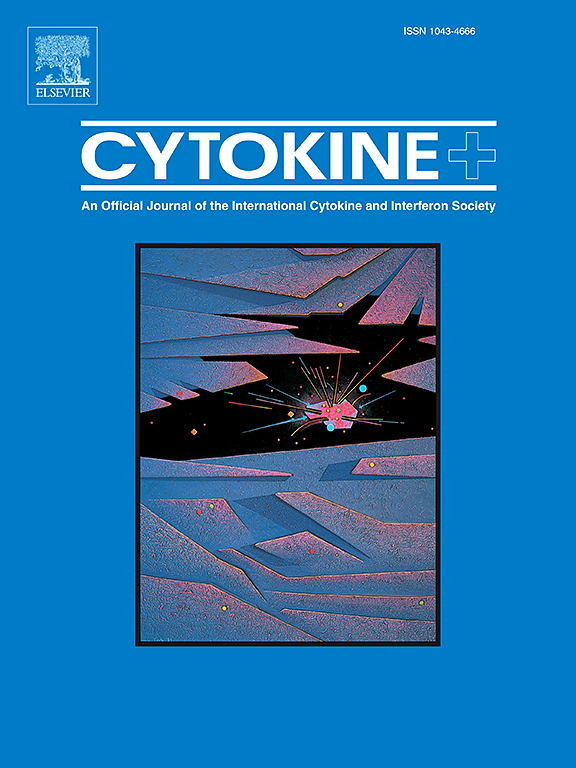幽门螺杆菌感染者胃粘膜CD8+TRM细胞通过CXCR5-CXCL13轴募集
IF 3.7
3区 医学
Q2 BIOCHEMISTRY & MOLECULAR BIOLOGY
引用次数: 0
摘要
幽门螺杆菌感染患者胃粘膜CD8+组织常驻记忆T (CD8+TRM)细胞增多,但CD8+TRM细胞的特征和趋化机制尚不清楚。我们发现C-X-C趋化因子受体5 (CXCR5)在胃粘膜CD8+TRM细胞中上调,而胃CXCL13主要由幽门螺杆菌感染的树突状细胞和巨噬细胞分泌。CagA+幽门螺杆菌感染患者胃黏膜CD8+TRM细胞增多,可分泌更多IFN-γ和TNF-α参与局部免疫应答。随着胃疾病的发展,幽门螺杆菌感染个体胃黏膜CD8+TRM细胞数量和CXCL13表达升高。综上所示,CagA+幽门螺杆菌感染患者胃粘膜CD8+TRM细胞增加,可通过CXCL13-CXCR5轴募集,在幽门螺杆菌相关免疫应答中主要释放IFN-γ和TNF-α。本文章由计算机程序翻译,如有差异,请以英文原文为准。

Gastric mucosal CD8+TRM cells are recruited through CXCR5-CXCL13 axis in Helicobacter pylori infected subjects
Gastric mucosal CD8+ tissue-resident memory T (CD8+TRM) cells are increased in Helicobacter pylori (H. pylori) infected subjects, but the characteristics and chemotactic mechanism of CD8+TRM cells remain unknown. We demonstrated that C-X-C chemokine receptor 5 (CXCR5) was upregulated on gastric mucosal CD8+TRM cells, and gastric CXCL13 was dominantly secreted by dendritic cells and macrophages in H. pylori infected subjects. Gastric mucosal CD8+TRM cells from CagA+ H. pylori infected subjects was increased and could secrete more IFN-γ and TNF-α to engage in local immune response. The number of gastric mucosal CD8+TRM cells and the expression of CXCL13 was elevated in H. pylori infected individuals with the development of gastric diseases. In conclusion, gastric mucosal CD8+TRM cells are increased from CagA+ H. pylori infected subjects and could be recruited through CXCL13-CXCR5 axis, which mainly release IFN-γ and TNF-α in H. pylori related immune response.
求助全文
通过发布文献求助,成功后即可免费获取论文全文。
去求助
来源期刊

Cytokine
医学-免疫学
CiteScore
7.60
自引率
2.60%
发文量
262
审稿时长
48 days
期刊介绍:
The journal Cytokine has an open access mirror journal Cytokine: X, sharing the same aims and scope, editorial team, submission system and rigorous peer review.
* Devoted exclusively to the study of the molecular biology, genetics, biochemistry, immunology, genome-wide association studies, pathobiology, diagnostic and clinical applications of all known interleukins, hematopoietic factors, growth factors, cytotoxins, interferons, new cytokines, and chemokines, Cytokine provides comprehensive coverage of cytokines and their mechanisms of actions, 12 times a year by publishing original high quality refereed scientific papers from prominent investigators in both the academic and industrial sectors.
We will publish 3 major types of manuscripts:
1) Original manuscripts describing research results.
2) Basic and clinical reviews describing cytokine actions and regulation.
3) Short commentaries/perspectives on recently published aspects of cytokines, pathogenesis and clinical results.
 求助内容:
求助内容: 应助结果提醒方式:
应助结果提醒方式:


